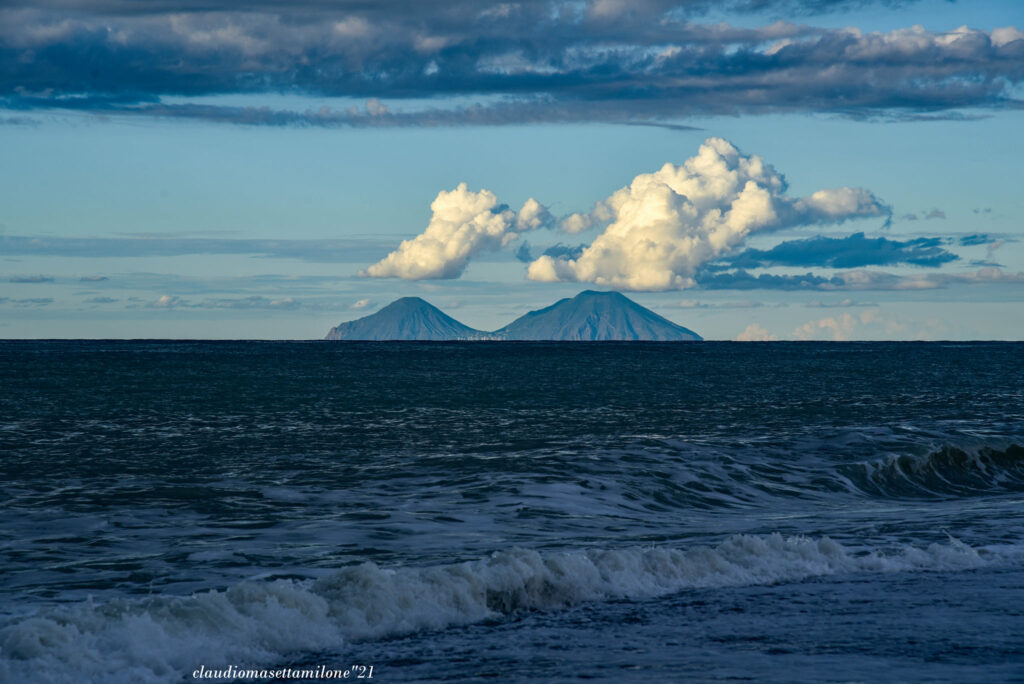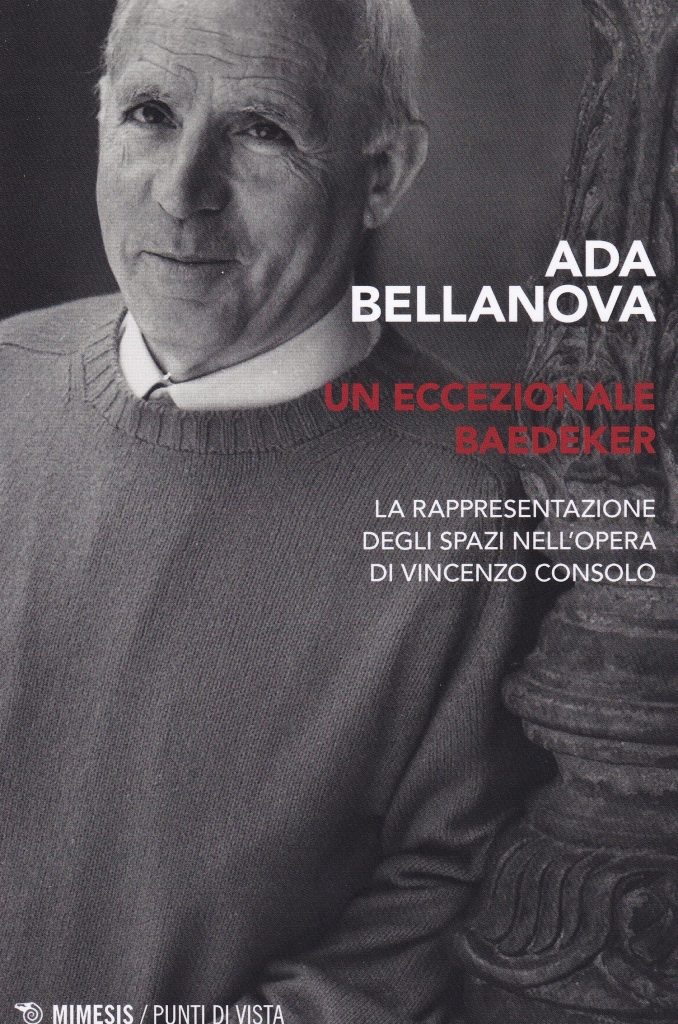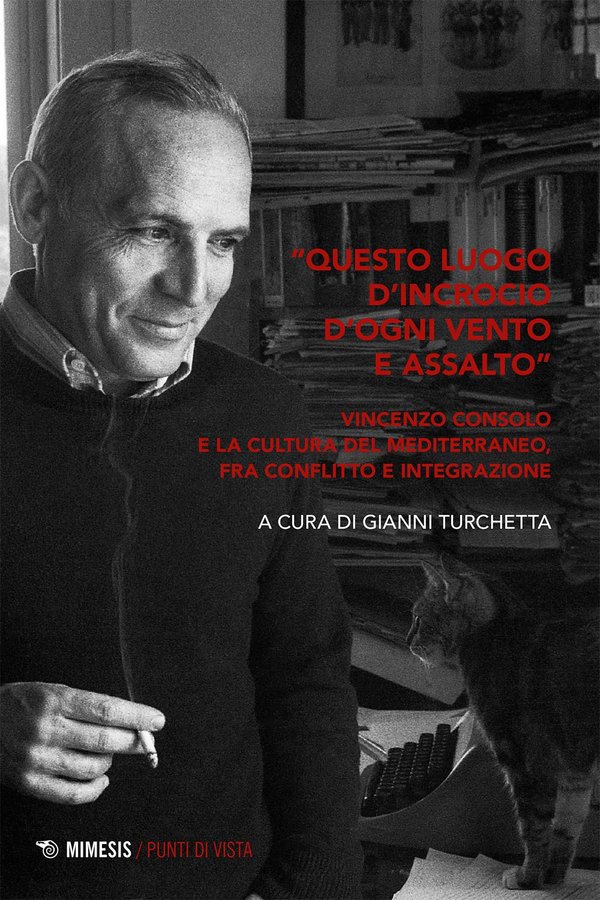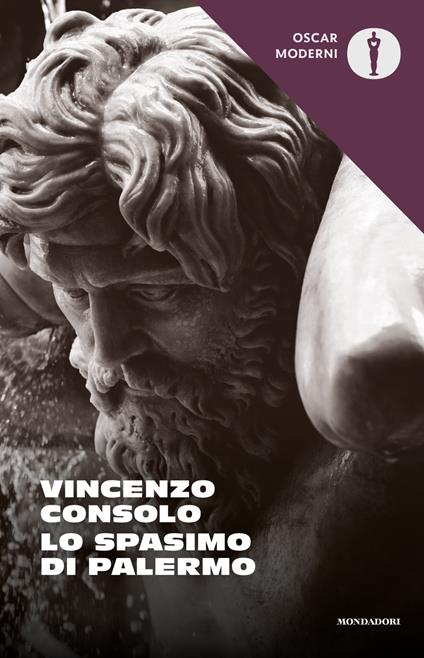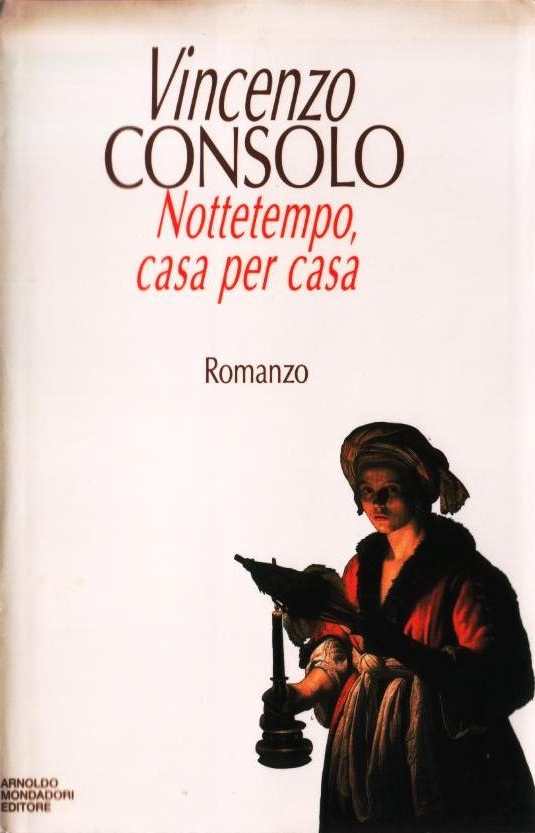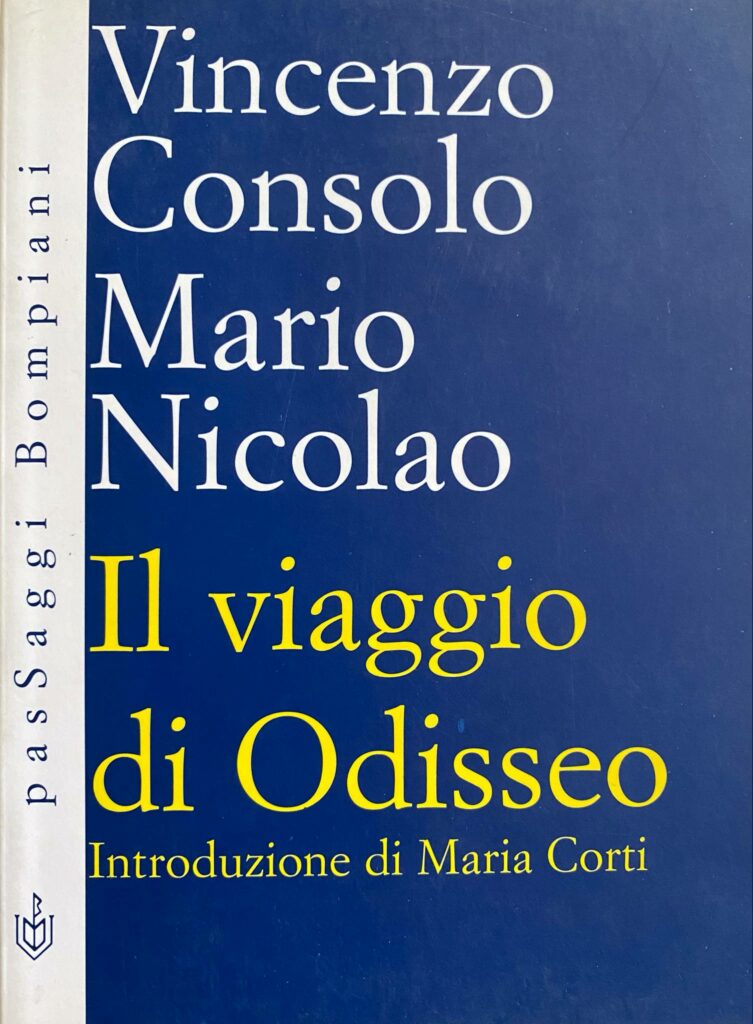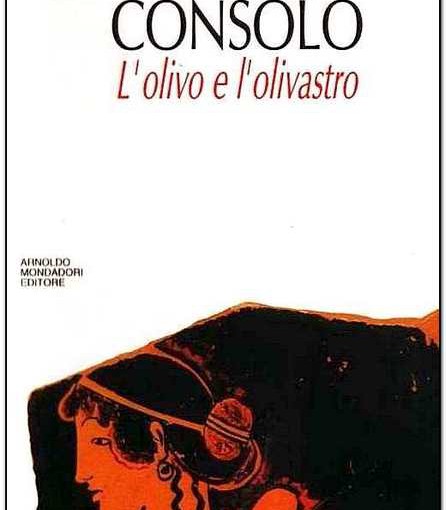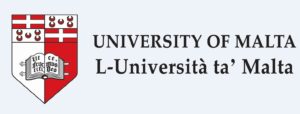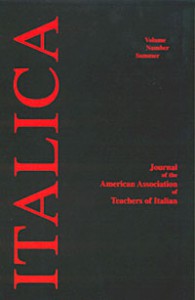In L’Italianistica oggi: ricerca e didattica, Atti del XIX Congressodell’ADI – Associazione degli Italianisti (Roma, 9-12 settembre 2015), a cura di B. Alfonzetti, T. Cancro, V. Di Iasio, E. Pietrobon, Roma, Adi editore, 2017
CINZIA GALLO
L’olivo e l’olivastro di Vincenzo
Consolo tra finzioni e funzioni della letteratura
L’olivo e l’olivastro (1994) costituisce una
tappa importante nella ricerca espressiva di Consolo, che asserendo, in
apertura, «Ora non può narrare», pone subito in evidenza la distinzione fra
scrivere e narrare e il tema dell’«afasia». Come dichiara, infatti, un’
intervista, «Ci sono momenti in cui la disperazione è tale che non trovi più
interlocutori […]. Ci sono due tipi di afasia: quella del potere, che per
definizione non vuole comunicare, e quella dell’artista che si oppone a questo
potere». In primo piano è, perciò, la funzione civile dello scrittore che,
però, mette in pericolo «il corpo letterario del racconto». Da qui il carattere
ibrido del nostro testo: i diciassette capitoli si snodano, quasi indipendenti
l’uno dall’altro, in una sorta di collage, fra narrazione, diario di viaggio,
poesia, saggio, digressioni, descrizioni. Analogamente, il gioco citazionistico
– con ricorso, anche, alla memoria interna (l’allusione a Lunaria, ed altri
testi consoliani)-, la tecnica dell’accumulo, la finzione letteraria – con le
varie voci narranti -, rappresentano un’ulteriore riflessione sull’ autoreferenzialità
della letteratura. L’olivo e l’olivastro fornisce, dunque, un chiaro esempio di
metaletteratura.
L’olivo e l’olivastro (1994) rappresenta una
tappa importante nella ricerca ideologica edespressiva di Vincenzo Consolo. Già il titolo mostra l’intreccio di
finzioni e funzioni su cui si basa. Ne Lo
spazio in letteratura, del 1999, Consolo spiega, difatti:
Anche chi qui
scrive, nella sua vicenda letteraria, […] è risalito, soprattutto nei due
ultimi libri, L’olivo e l’olivastro e
Lo Spasimo di Palermo, all’archetipo
omerico, a quell’Odissea da cui siamo
partiti. Lo spazio, in questi due romanzi, si dispiega fra due poli, Milano e
la Sicilia. Ma l’Odissea , sappiamo,
è una metafora della vita, del viaggio della vita. Casualmente nasciamo in
un’Itaca dove tramiamo i nostri affetti, dove piantiamo i nostri olivi, dove
attorno all’olivo costruiamo il nostro talamo nuziale, dove generiamo i nostri
figli. Ecco, noi oggi, esuli, erranti, non aneliamo che a ritornare a Itaca, a
ritrovare l’olivo. Lo scacco consiste nel fatto che sull’olivo ha prevalso
l’olivastro, l’olivo selvatico. 1
Il testo omerico, dunque, costituisce, secondo la terminologia
genettiana, un vero e proprio ‘ipotesto’ per Consolo, che organizza, attraverso
delle particolari finzione narrative, la funzione ideologico-civile a cui ha
sempre mirato, come precisa in Memorie:
La prosa dunque della narrazione nasce per me da un contesto storico e
allo stesso contesto si rivolge. Si rivolge con quella parte logica, di
comunicazione che sempre ha in sé il racconto. Che è, per questa sua origine
per questo suo destino, un genere letterario “sociale”. Sociale voglio dire
soprattutto perché, in opposizione tematica e linguistica al potere,
responsabile del malessere sociale […] il narratore vuole rimediare almeno
l’infelicità contingente. 2
Il
secondo capitolo de L’olivo e l’olivastro
presenta perciò Ulisse che, dopo essere approdato, «Spossato, lacero, […] in
preda a smarrimento, panico […]», nella terra dei Feaci, «trova riparo in una
tana» posta «tra un olivo e un olivastro»3 (O, 17). Il carattere simbolico di queste piante
- subito chiarito da Consolo:
- spuntano da uno stesso tronco questi due simboli
del selvatico e del coltivato, del bestiale e dell’umano, spuntano come
presagio d’una biforcazione di sentiero o di destino, della perdita di sé,
dell’annientamento dentro la natura e della salvezza in seno a un consorzio
civile, una cultura (O, 17-18).
In realtà,
tutta la vicenda di Ulisse è ripercorsa in senso simbolico: non solo «diventa
metafora che consente a Consolo di ritrovare nel mito e nella letteratura un
senso drammatico e
- V.CONSOLO, Lo
spazio in letteratura, in Di qua dal
faro, Milano, Mondadori, 1999, 270.
- CONSOLO, Memorie, in La mia isola è Las Vegas, Milano, Mondadori, 2012, 136.
- Tutte le
citazioni dal nostro testo, indicato con la lettera O, sono tratte da: V. CONSOLO, L’olivo e l’olivastro, Milano, Mondadori, 1994.
complesso
dell’esistenza personale e collettiva»,4 ma costituisce un’esortazione, per tutti gli uomini, alla lucidità,
alla ragione, a non cadere in errori generati da vicende esterne o interiori.
Mentre, difatti, la terra dei Feaci, con «il rigoglioso giardino, la […]
fastosa reggia, la saggia […] regina, […] l’accogliente corte, il popolo amico;
e l’esercizio in loro della ragione, l’amore per il canto, la poesia»,
rappresenta «una città ideale, un regno d’armonia» (O, 18), il viaggio di
Ulisse in seguito alla disfatta di Troia è «il luogo dove il reale, il
concreto, si sfalda, vanifica, e insorge l’irreale, s’installa il sogno,
l’allucinazione: il genitore dei mostri, immagini delle nostre paure, dei
nostri rimorsi» (O, 19). Ulisse si è reso colpevole, difatti, di aver costruito
il cavallo con cui Troia è stata distrutta, perciò «il racconto del viaggio di
ritorno fatto da Odisseo è quello della colpa e espiazione, della catarsi
soggettiva».5 La vicenda di Odisseo,
dunque, è «Metafora di quel che riserva la vita a chi è nato per caso nell’isola dai tre angoli: epifania crudele,
periglioso sbandare nella procella del mare, nell’infernale natura; salvezza
possibile dopo tanto travaglio, approdo a un’amara saggezza, a una disillusa
intelligenza» (O, 22). Consolo esprime allora il disorientamento del siciliano,
simbolo di tutti gli uomini, attraverso varie figure retoriche (enumerazioni,
antitesi, anafore, chiasmi), ponendo termini aulici accanto ad altri più
comuni, mettendo in evidenza la sua propensione verso quella forma espressiva
che egli stesso definisce «poema narrativo» (O, 48).
Il
nostro testo, difatti, esprime all’inizio («Ora non può narrare» [O, 9])
l’impossibilità di narrare, cioè di portare avanti, di condurre una «scrittura
creativa».6 Appunto per questo non
c’è, ne L’olivo, «una chiara diegesi,
né all’interno dei singoli capitoli, né che li colleghi fra di loro: invece, la
narrazione procede seguendo una serie di immagini ‘poetiche’, largamente
connesse, del passato».7
Fra queste, solo il meccanico terremotato racconta la propria storia in prima
persona, come accadrà alla fine del quattordicesimo capitolo, quando il
viaggiatore esprimerà il proprio disorientamento; le altre figure, chiaramente
autobiografiche, di emigranti, parlano in terza persona, in quanto, «nella
modernità le colpe non sono più soggettive, sono oggettive, sono della storia»:
di conseguenza «l’introspezione non è necessaria».8 Consolo, allora, da una
parte arricchisce i suoi exempla con
citazioni autoriali (Dante, Pisacane, Ungaretti, per esempio), dall’altra dà
nuovo significato all’ antitesi classica fra città e campagna. A Messina, Roma,
Milano, tutte rappresentate negativamente, si contrappone la «Bellissima
Toscana contadina», simbolo dei valori «del lavoro, della fatica umana» e
perciò «civilissima» (O, 13). L’esplosione della raffineria di Milazzo,
ricordata nel terzo capitolo, è l’esempio, invece, di come l’intervento
dell’uomo, sull’ambiente, non sia stato sempre positivo. La raffineria è
infatti in contrasto con «il castello, le mura saracene, sveve e aragonesi, i
torrioni […] la grotta di Polifemo, […] il porto, il Borgo, le chiese, i
conventi. […] la vasta piana […] ricca di agrumi, ulivi, viti, orti. Ricca di
gelsomini» (O, 24) fra cui si aggirava il ragazzo, recatosi a visitare i
parenti nelle Eolie (altra proiezione autobiografica, in quanto Consolo ha
realmente una sorella sposata con un notaio di Lipari, come appare nel quarto
capitolo), aspettando il treno che l’avrebbe riportato a casa. Narrare allora,
con chiara allusione a Il Narratore
di Benjamin, «significa socializzare esperienze ricordate. La narrazione […]
“attinge sempre alla memoria” e la memoria […] è “madre della poesia”, che […]
è […] l’espressione di verità condivisibili riguardo la nostra umana
condizione».9 In altre parole, il
«narratore benjaminiano […] impartisce conoscenza e cerca
- M. LOLLINI, Intrecci mediterranei. La testimonianza di
Vincenzo Consolo, moderno Odisseo, in «Italica», 82, 1 (Spring 2005),
24-43: 25.
- V. CONSOLO – M. NICOLAO, Il viaggio di Odisseo, Milano, Bompiani,
1999, 21.
- J. FRANCESE, Vincenzo
Consolo, Firenze, Firenze University Press, 2015, 4.
- Ivi, 27.
- CONSOLO – NICOLAO, Il viaggio…, 22.
- FRANCESE, Vincenzo Consolo, 86. Lo stesso Consolo spiega il termine
«narrazione» richiamandosi a Benjamin: «Dico narrazione nel senso in cui l’ha
definita Walter Benjamin in Angelus Novus.
Dice in sintesi, il critico, che la narrazione è antecedente al romanzo, che
essa è affidata più all’oralità che alla scrittura, che è il resoconto di
un’esperienza, la relazione di un viaggio. “Chi viaggia, ha molto da
raccontare” dice. “E il narratore è sempre colui che viene da lontano. C’è
sempre dunque, nella narrazione, una
attivamente di
trasformare il presente raccontando un passato personale eppur condivisibile,
passato che, per analogia, può guidare il suo pubblico verso il futuro».10 L’obiettivo è raggiunto
attraverso quella che Consolo definisce «narrazione poematica», che comporta da
una parte «la frantumazione del flusso diegetico attraverso l’inserzione di
incisi, […] immagini», dall’altra l’uso di «exempla, eventi elevati a metafora».11 Ecco, allora, che Consolo, rifacendosi a quella
che Genette chiama funzione di attestazione, menziona alcuni passi dell’ Enciclopedia Italiana Treccani, della Enciclopedia sistematica del regno vegetale,
del testo Flora sicula. Dizionario
trilingue illustrato, per mettere in rilievo le origini arabe del
gelsomino, simbolo, così, del sincretismo culturale della Sicilia ma anche
della bellezza incontaminata della pianura di Milazzo. Quella che lo storico
Giuseppe Piaggia, infatti, ritiene «uno de’ più incantevoli teatri dell’intera
Sicilia», in cui cresceva il gelsomino, «pascolavano gli armenti del Sole»,
ricordati nell’Odissea, è diventata
«una vasta e fitta città di silos, di tralicci, di ciminiere che perennemente
vomitano fiamme e fumo, una metallica, infernale città di Dite che tutto ha
sconvolto e avvelenato: terra, cielo, mare, menti, cultura» (O, 28). Affiora
così in primo piano la funzione ideologica: come i compagni di Ulisse sono
puniti per aver ucciso le vacche del Sole, così i superstiti dell’esplosione
della raffineria di Milazzo si augurano che «le neri pelli dei compagni
striscino, svolazzino nelle notti di rimorsi e sudori dei petrolieri, urlino le
membra di dolore e furore nei sogni dei ministri» (O, 28). Sotto questo segno
si conclude, anche, il quarto capitolo («Altre tempeste, altre eruzioni, piogge
di ceneri e scorrere di lave, altre incursioni di corsari investirono e
distrussero le sue Eolie, le Planctai,
le isole lievi e trasparenti, sospese in cielo, ferme nel ricordo» [O, 32]),
grazie all’anafora, ai parallelismi, all’antitesi («sospese» – «ferme»).
«lievi, […] sospese in cielo» (O, 29) sono apparse le isole anche all’inizio
del capitolo, a suggerire la struttura circolare, propria di Consolo, su cui è
costruito L’olivo e l’olivastro: alla
fine, difatti, rivedremo il meccanico di Gibellina che ripeterà: «Sono nato a
Gibellina, di anni ventitrè» (O, 9, 147). Le assonanze («lievi» –
«trasparenti»; «sospese» – «ferme»), d’altra parte, sottolineano l’importanza
degli aggettivi, uniti in quelle enumerazioni che formano la «ritrazione
musicale» caratteristica del poema narrativo («un ibrido, un incontro di logico
e di magico, di razionale-comunicativo e di lirico -poetico»12). Grazie all’
enumerazione, poi, il ricordo personale si fonde con la memoria di una civiltà,
attraverso la finzione del resoconto di un viaggio, in perfetta consonanza con
il narratore descritto da Benjamin («il narratore è pre-borghese, è colui che
riferisce un’esperienza che ha vissuto, è soprattutto quello che viene da
lontano, che ha compiuto un viaggio»13). Gli esempi sono innumerevoli, in questo
senso. Osserviamo quanto accade ad Augusta:
Il vento di
Borea, sceso dalle anguste gole del Peloro, lo sospinse alla costa dei coloni
venuti da Micene, Megara Nisea, Calcide, Corinto, tra Megara Hyblea e Thapsos,
lo portò nel golfetto più in là di punta Izzo, nel témenos di smarrimento e allucinazione, d’incanto e rapimento
, dove, nella luce aurorale d’un agosto, al giovane studioso di
dialetti ionici, apparve, emergendo dal mare, la creatura sublime e brutale,
adolescente e millenaria, innocente e sapiente, la sirena silente [omoteleuto]
che invade e possiede, trascina nelle immote dimore [assonanza], negli abissi
senza tempo, senza suono (O, 33).
In altri casi
le immagini del mito, inserite in metafore, combinate con altre figure
retoriche (anafore, enumerazioni), servono a rafforzare la degenerazione del
presente:
Corre sulla strada
per Siracusa, lungo la costa bianca e porosa di calcare, ai piedi del tavolato
degli Iblei, va oltre Tauro, Brùcoli, Villasmundo, va dentro l’immenso inferno
di ferro e fiamme, vapori e fumi, dentro fabbriche di cementi e concimi, acidi
e diossine, centrali termoelettriche e raffinerie, dentro Melilli e Priolo di
cilindri e piramidi, serbatoi di
lontananza
di spazio e di tempo”. E c’è, nella narrazione, un’idea pratica di giustezza e
di giustizia, un’esigenza di moralità» (I
ritorni, in Di qua dal faro,
144).
- Ivi, 64.
- Ivi, 71.
- CONSOLO, L’invenzione della lingua, in «MicroMega», 5 (1996), 115
nafte, oli,
benzine, dentro il regno sinistro di Lestrigoni potenti, di feroci giganti che
calpestano uomini, leggi, morale, corrompono e ricattano, devìa per Agosta,
l’Austa sul chersoneso fra due porti, Xifonio e Megarese, nell’isola congiunta
alla terra da due ponti. La città dei due Augusti, il romano e lo svevo, chiusa
nel superbo castello, nei baluardi, nelle mura, circondata da scogli con forti
dai nomi sonanti, Ávalos, García, Vittoria, crollati per terremoti e guerre e
sempre ricostruiti, varcata la Porta Spagnola, gli appare nella luce cinerea,
nella tristezza di un’Ilio espugnata e distrutta, nella consunzione
dell’abbandono, nell’avvelenamento di cielo, mare, suolo (O, 34).
Attraverso
un inciso («Come sempre le guerre»), poi, il narratore dà valore generale alla
singola esperienza, che pone sullo stesso piano lo scempio causato dagli uomini
e quello determinato dalle calamità naturali:
Contro lo sfondo di caserme mimetiche e hangar vuoti e forati da
raffiche e schegge, contro lo scenario fermo di un’ultima guerra di follia e
massacro, come sempre le guerre, erano le nuove macerie del terremoto d’una
notte di dicembre che aveva aperto tetti, mura di case, chiese, inclinato
colonne, paraste, mutilato statue, distrutte e rese fantasma le case della
Borgata (O, 34).
Sono
allora le città del passato, come asserito anche in Retablo, a rappresentare gli aspetti positivi, i valori smarriti al
presente, con palese richiamo all’ «inversione storica»14 di Bachtin. Lo
sottolineano le anafore, le enumerazioni, il poliptoto, le metafore:
Ama quella sua
città, non vede quelle mura dirute, quelle chiese puntellate da travi, quelle
case deserte, quel porto, quel mare oleoso invaso da petroliere, quella
campagna intorno di ulivi e mandorli neri, quelle spiagge caliginose e
affollate di bagnanti, quell’orizzonte, quello sky-line di tralicci, di tubi,
di silos. Amano [poliptoto], lui e lo zio professore, pensionato della scuola,
la città del passato, antecedente a quella dei Romani, a quella che il gran
Federico munì di castello e privilegi, la remota città che conoscono in ogni
pietra, in ogni vicenda, su cui insieme scrivono una notizia, una guida: amano
un sogno, un mondo lontano, lontano [anadiplosi] dall’orrore presente (O, 35).
Rappresentano
dunque, questi moduli espressivi, l’unica possibilità in un periodo di crisi. I
rapporti «tra parola e realtà nella società contemporanea»15 sono del resto discussi
nel sesto capitolo, di chiaro orientamento metaletterario, che ripropone, in
apertura, la situazione già presentata in Catarsi.
Anche qui, infatti, Pausania dichiara di essere «il messaggero, l’ ánghelos», a cui «è affidato il dovere
del racconto: conosco i nessi, la sintassi, le ambiguità, le malizie della
prosa, del linguaggio..» (O, 39). Ma Empedocle, analogamente che in Catarsi, definisce «ogni parola […]
misera convenzione» (O, 41), per cui pronuncia «parole d’una lingua morta, / di
corpo incenerito, privo delle scorie / putride dello scambio, dell’utile / come
la lingua alta, irraggiungibile, / come la lingua altra, oscura, / della Pizia
o la Sibilla / che dall’antro libera al vento mugghii, foglie…» (O, 44).
Queste posizioni, d’altra parte, porteranno Consolo a dichiarare, in I ritorni:
Ma oggi, in
questa nostra civiltà di massa, in questo mondo mediatico, esiste ancora la
possibilità di scrivere il romanzo? Crediamo che oggi, per la caduta di
relazione tra la scrittura letteraria e la situazione sociale, non si possano
che adottare, per esorcizzare il silenzio, i moduli stilistici della poesia;
ridurre, per rimanere nello spazio letterario, lo spazio comunicativo, logico e
dialogico proprio del romanzo. 16
- M.BACHTIN, Estetica
e romanzo, Einaudi, Torino 1979, 294.
- M.ATTANASIO, Struttura-azione di poesia e narratività
nella scrittura di Vincenzo Consolo, in «Quaderns d’Italià», 10, 2005, 26.
- CONSOLO, I ritorni, 145.
E ne Lo
Spasimo di Palermo:
Abborriva il
romanzo, questo genere scaduto, corrotto, impraticabile. Se mai ne aveva
scritti, erano i suoi in una diversa lingua, dissonante, in una furia verbale
ch’era finita in urlo, s’era dissolta nel silenzio. Si doleva di non avere il
dono della poesia, la sua libertà, la sua purezza, la sua distanza
dall’implacabile logica del mondo. 17
Consolo concludeva, in tal modo, un discorso
iniziato precedentemente, in Fuga
dall’Etna e in
Nottetempo,
casa per casa. Nel primo,
aveva asserito:
Il romanzo […] sta degenerando […] Si stampano tanti romanzi oggi, e più
se ne stampano più il romanzo si allontana dalla letteratura. Un modo per
riportarlo dentro il campo letterario penso sia quello di verticalizzarlo,
caricarlo di segni, spostarlo verso la zona della poesia, a costo di farlo
frequentare da ‘felici pochi’. 18
- in Nottetempo,
casa per casa:
- è
possibile ancora la scansione, l’ordine, il racconto? E’ possibile dire dei
segni, dei colori, dei bui e dei lucori, de grumi e degli strati, delle
apparenze deboli, delle forme che oscillano all’ellisse, si stagliano a
distanza, palpitano, svaniscono? E tuttavia per frasi monche, parole difettive,
per accenni, allusioni, per sfasature e afonie tentiamo di riferire di questo
sogno, di questa emozione. 19
Modello,
allora, della nuova forma narrativa sono I
Malavoglia, privi di «intreccio […] di romanzesco» (O, 48). I suoi moduli
espressivi corrispondono a un dolore assoluto:
Un poema narrativo, un’epica popolana, un’odissea chiusa, circolare, che
dà il senso, nelle formule lessicali, nelle forme sintattiche, nel timbro
monocorde, nel tono salmodiante, nei proverbi gravi e immutabili come sentenze
giuridiche o versetti di sacre scritture, Bibbia, Talmud o Corano, dà il senso
della mancanza di movimento, dell’assenza di sviluppo, suggerisce l’immagine
della fissità: della predestinazione, della condanna, della pena senza rimedio
(O, 48).
Ma,
secondo Consolo, al presente la situazione è degenerata: la speculazione
edilizia ha fatto sparire «le casipole, le barche, i fariglioni. […] gli
scogli, la rupe del castello di Aci, il Capo Mulini, l’intero orizzonte» (O,
49), in contrapposizione a Vizzini, luogo carico di memorie verghiane. Si
verifica, di conseguenza, la «fine del poema», con un «turbinìo di parole,
suoni privi di senso, di memoria» (O, 49). Un esempio è l’accumulo di termini
che descrivono il procedere del viaggiatore lungo la costa catanese:
Va dentro il
frastuono, la ressa, l’anidride, il piombo, lo stridore, le trombe, gli
insulti, la teppaglia che caracolla, s’accosta, frantuma il vetro, preme alla
tempia la canna agghiacciante, scippa, strappa anelli collane bracciali, scappa
ridendo nella faccia di ceffo fanciullo, scavalca, s’impenna, zigzaga fra spazi
invisibili, vola rombando, dispare. Va lungo la nera scogliera, il cobalto del
mare, la palma che s’alza dai muri, la buganvillea, l’agave che sboccia tra i
massi, va sopra l’asfalto in cui sfociano tutti gli asfalti che ripidi scendono
dalle falde in cemento del monte, da Cibali Barriera Canalicchio Novalucello,
oltrepassa Ognina, la chiesa, il porto d’Ulisse, coperti da cavalcavie rondò
svincoli raccordi motel palazzi – urlano ai margini venditori di pesci, di
molluschi di nafta -, oltrepassa la rupe e il castello di lava a picco sul
mare, giunge al luogo dello stupro, dell’oltraggio (O, 46-47).
- V. CONSOLO, Lo
Spasimo di Palermo, Milano, Mondadori, 1998, 105.
- V. CONSOLO, Fuga dall’Etna. La Sicilia e Milano, la
memoria e la storia, Roma, Donzelli, 1993, 60-61.
- V. CONSOLO, Nottetempo,
casa per casa, Milano, Mondadori, 1992, 68-69.
Che Catania sia «pietrosa e inospitale, emblema
d’ogni luogo fermo o imbarbarito» (O, 58),
- dimostrato dalla scarsa
attenzione riservata, già dai suoi stessi contemporanei, a Verga, che viene
così a rappresentare l’intellettuale esule nella sua stessa città, un «inferno
[….] che sempre e in continuo fu coperta dalle lave, squassata e rovinata dai
tremuoti» (O, 57). Da qui la «sfida spavalda e irridente» (O, 57) degli
abitanti, che rivolgono, invece, la loro attenzione a Rapisardi, «il
versificatore vuoto e roboante» (O, 58). Quando, perciò, Catania organizza una
cerimonia per festeggiare gli ottant’anni di Verga, costui vede ben chiare «le
due facce […] di quella odiosamata sua città, di quel paese: la maschera
ottusa, buffona e ruffiana della farsa e quella furba e falsa della retorica,
dell’eroismo teatrale e decadente» (O, 62). E non è certamente un caso che sia
Pirandello a rendersi conto dell’estraneità di Verga, che un sapiente uso
dell’aggettivazione, delle figure retoriche (anafore, metafore, enumerazioni)
sottolineano, costituendo un ulteriore esempio di scrittura poematica:
Pirandello lo
osservò ancora e gli sembrò lontano, irraggiungibile, chiuso in un’epoca
remota, irrimediabilmente tramontata. Temette che né il suo, né il saggio di
Croce, né il vasto studio del giovane Russo avrebbero mai potuto cancellare
l’offesa dell’insulsa critica, del mondo stupido e perduto, a quello scrittore
grande, a quell’Eschilo e Leopardi della tragedia antica, del dolore, della
condanna umana. Pensò che, al di là dell’esterna ricorrenza, delle formali
onoranze, in quel tempo di lacerazioni, di violenza, di menzogna, in quel
tramonto, in quella notte della pietà e dell’intelligenza, il paese, il mondo,
avrebbe ancora e più ignorato, offeso la verità, la poesia dello scrittore.
Pensò che quel presente burrascoso e incerto, sordo alla ritrazione, alla
castità della parola, ebbro d’eloquio osceno, poteva essere rappresentato solo
col sorriso desolato, con l’umorismo straziante, con la parola che incalza e
che tortura, la rottura delle forme, delle strutture, la frantumazione delle
coscienze, con l’angoscioso smarrimento, il naufragio, la perdita dell’io.
Pensò che la Demente, la sua Antonietta, la suor Agata della Capinera, la povera madre, il fratello
suicida di San Secondo, ogni pura fragile creatura che s’allontana, che
sparisce, non è che un barlume persistente, segno di un’estrema sanità nella
malattia generale, nella follia del presente (O, 67).
.
Difatti,
se, come è noto, Consolo individua una differenza fra la cultura della parte
orientale dell’isola, in cui collochiamo Verga, interessata ai temi
dell’esistenza, della natura, e quella della parte occidentale, di cui è
rappresentante Pirandello, orientata ai problemi della storia, sono questi,
adesso, ad essere considerati più urgenti. Nel decimo capitolo, perciò, il
viaggiatore, giunto a Caltagirone, incontra la sua amica Maria Attanasio, un
vero e proprio modello di intellettuale e scrittrice. Vive in disparte «dal
mondo», in quanto, consapevole degli aspetti negativi della sua terra, «come tutti
i poeti ama un altro mondo, un altro paese» (O, 71). Analogamente alla
protagonista del suo romanzo Correva
l’anno 1698 e in città avvenne il fatto memoriabile,
Maria, allora, «s’era mascherata da uomo, da poliziotto, per combattere
l‘incuria, ildisordine
amministrativo, il sopruso mafioso» (O, 75), che si riflettono nella
conformazione della città, in linea con la grande importanza che Consolo
attribuisce, sempre, alla geografia, agli spazi. «Al di qua del paese saraceno,
giudeo, genovese e spagnolo, […] è sulla piana un altro paese speculare di
cemento: quartieri e quartieri uniformi di case nuove e vuote, deserte. […]
mostruosità nate dalla cultura di massa, […]» (O, 70). La condanna di questa,
che ha provocato la perdita della memoria, della storia, testimoniate dalle
ceramiche delle facciate di edifici pubblici e privati – a rivelare il
carattere visivo-figurativo20
della scrittura consoliana, è senz’appello, grazie, sempre, alle figure
retoriche utilizzate:
- Infatti, «[…] la historia
de la escritura de Vincenzo Consolo puede reconstruire idealmente a partir de
una percepción cromática desarrollada en una página inédita, […] El narrador
incipiente […] estaría ofreciendo ya una de las claves de construcción – y de
lectura – de su obra futura: “Pensate a un quadro”» (M.Á. CUEVAS, Ut Pictura: El imaginario iconográfico en la obra de Vincenzo Consolo,
in «Quaderns d’Italià», 10 (2005), 63-77: 64). Lo stesso Consolo, del resto,
dichiara in un’intervista: «Sempre ho avvertito l’esigenza di equilibrare la
seduzione […] della parola con la visualità, con la visione di una
concretezza visiva» (D. O’CONNELL,
Il dovere del racconto: Interview with
Vincenzo Consolo, in «The Italianist», 24: II, 2004, 251)-
Sembra così,
questo piccolo paese nel cuore della Sicilia, il plastico, l’emblema del più
grande paese, della vecchia Italia che ha generato dopo i disastri del
fascismo, nei cinqant’anni di potere, il regime democristiano, la trista,
alienata, feroce nuova Italia del massacro della memoria, dell’identità, della
decenza e della civiltà, l‘Italia corrotta, imbarbarita, del saccheggio, delle
speculazioni, della mafia, delle stragi, della droga, delle macchine, del
calcio, della televisione e delle lotterie, del chiasso e dei veleni. Il
plastico dell’Italia che creerà altri orrori, altre mostruosità, altre
ciclopiche demenze (O, 71).
I
danni della cultura di massa, verso cui Consolo è sempre molto critico,21 sono chiari a Gela, dove
un ragazzo, «nutrito» di una «demente cultura», di «libri di vuote
chiacchiere», «della furbastra e volgare letteratura sulla degradazione e la
marginalità sociale», come appare nei «serials televisivi, […] Piovra 1, Piovra 2, Piovra 3…»,
dimenticando «ogni cognizione del giusto e dell’ingiusto, della pietà e della
ferocia, ogni fraterno affetto» (O, 80-81), ha ucciso il fratello per futili
motivi. Il verbo ‘nutrire’, ripetuto in anafora, è ovviamente usato in funzione
antifrastica, in quanto è evidente che la cultura ha perso ogni aspetto
formativo e solo la scrittura poematica può alludere a tale degenerazione
(«Dire di Gela nel modo più vero e forte, dire di questo estremo disumano,
quest’olivastro, questo frutto amaro, questo feto osceno del potere e del
progresso, dire del suo male infinite volte detto, dirlo fuor di racconto, di
metafora, è impresa ardua o vana» [O, 77]). Riprendendo infatti quanto asserito
in Memorie («in questo ibrido
letterario che è il racconto», la «parte logica [ …] può invadere per
altissima febbre civile tutta la colonnina, […] con […] rischi mortali per
il corpo letterario del racconto»,22 Consolo adesso dichiara: «Ma oltre Gela o
Milazzo, Augusta o Catania, è in questo tempo per chi scrive un mortale rischio
tradire il campo, uscire dal racconto, negare la finzione e il miele
letterario, riferire d’una realtà vera, d’un ritorno amaro, d’un viaggio nel
disastro [O, 77]). L’intellettuale, difatti, al presente non è ascoltato.
Consolo, di conseguenza, svela le cause del malessere di Gela attraverso una
prosa che adotta, ancora una volta, l’andamento ritmico della poesia (grazie
all’anafora, all’enumerazione, alla metafora, all’allitterazione) e in cui
convivono termini aulici («obliato»), anche di memoria montaliana («cocci»,
«muraglia»), con altri più comuni:
Da quei pozzi,
da quelle ciminiere sopra templi e necropoli, da quei sottosuoli d’ammassi di
madrepore e di ossa, di tufi scanalati, cocci dipinti, dall’acropoli sul colle
difesa da muraglie, dalla spiaggia aperta a ogni sbarco, dal secco paese povero
e obliato partì il terremoto, lo sconvolgimento, partì l’inferno d’oggi. Nacque
la Gela repentina e nuova della separazione tra i tecnici, i geologi e i
contabili giunti da Metanopoli, chiusi nei lindi recinti coloniali, palme
pitosfori e buganvillee dietro le reti, guardie armate ai cancelli, e gli
indigeni dell’edilizia selvaggia e abusiva, delle case di mattoni e tondini
lebbrosi in mezzo al fango e all’immondizia di quartieri incatastati, di strade
innominate, la Gela dal mare grasso d’oli, dai frangiflutti di cemento, dal
porto di navi incagliate nei fondali, inclinate sopra un fianco, isole di
ruggini, di plastiche e di ratti; nacque la Gela della perdita d’ogni memoria e
senso, del gelo della mente e dell’afasìa, del linguaggio turpe della siringa e
del coltello, della marmitta fragorosa e del tritolo (O, 78-79).
- In un’intervista del 2007,
Consolo osserva che con la mutazione antropologica «teorizzata da Pasolini. Il
nostro Paese si modernizzava velocemente, subendo però i modelli importati
dall’esterno. Da qui un asservimento culturale, linguistico negli usi, nei
costumi e nei consumi. […] Da qui la perdita di ogni forza espressiva e di
ogni verità storica» («Consolo ‘Le ombre della nostra cultura’». Intervista.
laRepubblica.it,
- novembre 2007, 1). Tre anni
prima, del resto, ha ricordato con piacere come «il poeta ed etnologo Antonino
Uccello, […] nel momento della grande mutazione antropologica, vale a dire
della fine della civiltà contadina», sia riuscito a raccogliere «antichi canti
popolari» (Consolo, Pino Veneziano e la canzone popolare, Milano 19 luglio
2004, pinoveneziano.altervista.org/consolo_e_fo.html). Critiche alla
televisione sono anche contenute in La
pallottola in testa (La mia isola è
Las Vegas, 157-162).
Ed
è proprio l’importanza attribuita alla storia e alla memoria a tenere lontano
Consolo dal postmodernismo, come ha puntualizzato Norma Bouchard.23 Consolo immagina allora
che dalle rovine del tempio di Atena, che quindi si pongono come depositarie e
custodi di autentici valori, si elevino alcuni versi dell’Agamennone di Eschilo («Quale
erba cresciuta / nel veleno, quale
acqua
- sgorgata dal fondo del mare / hai
ingoiato...» [O, 81]). Analogamente, le citazioni che,nell’undicesimo capitolo, descrivono Siracusa24 non possono essere
ricondotte al gioco citazionistico del postmodernismo, ma mettono in evidenza
come questa città, «d’antica gloria», rappresenti «la storia dell’umana civiltà
e del suo tramonto» (O, 84). Siracusa, descritta con la consueta tecnica
dell’accumulo («Molteplice città, di cinque nomi, d’antico fasto, di potenza,
d’ineguagliabile bellezza, di re sapienti e di tiranni ciechi, di lunghe paci e
rovinose guerre [chiasmo], di barbarici assalti e di saccheggi» [O, 83]),
oppone, alla decadenza del presente, i valori della storia e della poesia, in
quanto costituisce la «patria d’ognuno […] che conserva cognizione
dell’umano, della civiltà più vera, della cultura» (O, 84). Appunto per questo
Consolo ricorda il soggiorno a Siracusa di importanti personaggi (Maupassant,
Von Platen), i quali, spinti «a viaggiare per quel Sud mediterraneo che,
nell’abbaglio, nella mitologia poetica, aveva ereditato dalla Grecia la
Bellezza», vi trovano una città «dell’infinito tramonto e dell’abbandono» (O,
102). È proprio il verbo ‘trovare’, ripetuto in anafora, ad attestare lo scarto
tra le aspettative di Von Platen, che cerca «come consolazione al suo male,
rimedio al suo scontento, solo bellezza ed armonia greca» (O, 103), e la
realtà:
Trova vento e
tempesta quell’inizio d’inverno a Siracusa, la tramontana che sferza il mare
del porto Grande, piega i ficus della passeggiata Adorno, i papiri del Ciane,
illividisce la facciata barocca del Duomo d’Atena e di Santa Lucia, le colonne
dei templi, le pareti delle latomie. Trova solitudine e disperazione, consunto
dalla febbre, dal vomito, dalla dissenteria, trova la morte nella povera
locanda Aretusa di via Amalfitania (O, 103).
Due
secoli prima, del resto, pure Caravaggio ha giudicato Siracusa un «ammasso di
macerie», un «fosso di miseria e d’abbandono» (O, 90). La pochezza
intellettuale della città è dimostrata dal discorso del vescovo di fronte al
quadro di Santa Lucia commissionato a Caravaggio, discorso perfettamente in
linea con l’idea consoliana del racconto come genere «ibrido»,25 in cui le enumerazioni si
combinano con le anafore («non possiamo», «nostro-nostra»), con l’anadiplosi
(«perdoni, perdoni»):
- La Santa
nostra Lucia ci perdoni, perdoni la nostra stoltezza e il nostro inganno. Noi
non possiamo ora celebrare, avanti a questo scempio, a quei brutali ignudi
incombenti sull’altare, al cadavere reale della donna, a una santa priva di
nimbo, a quello squarcio sanguinoso sul suo collo, ai fedeli impiccioliti, al
vescovo nascosto…, non possiamo celebrare il santo sacrificio della Messa,
non possiamo benedire questo quadro. L’artista capisca e si studi
d’aggiustare… (O, 94-95).
La reazione di
Caravaggio, che sembra ricordare Fabrizio Clerici di Retablo per il suo legame con il paggio Martino e per aver visto
una «turba d’infelici, accattoni e infermi»26 (O, 91) nelle strade della città, è di uscire
«nella piazza vasta, nella luce del mattino» (O, 95): vastità di spazi e
- «It is
important to point out that even though Consolo’s novels exhibit many of the
rhetorical devices that we have come to associate with postmodern writing
practices, they also remain fundamentally distinct from dominant, majoritarian
forms of postmodernism» (N. BOUCHARD, Consolo and the Postmodern
Writing of Melancholy, «Italica»,
82, 1 [Spring 2005, 5-23: 10-11]).
- «’I’ son
Lucia; / lasciatemi pigliar costui che dorme; / sì l’agevolerò per la sua via’»
(Purgatorio, XI, 55-57), (O,
83); «Calava a Siracusa senza luna / La notte e
l’acqua plumbea / E ferma nel suo fosso riappariva, / Soli andavamo dentro la rovina, / Un cordaro si mosse dal
remoto (G. UNGARETTI, Ultimi cori per la terra promessa, in Vita d’un uomo. Tutte le poesie, a cura di L. PICCIONI, Milano, Mondadori, 1982,
281), (O, 84).
- CONSOLO, Memorie…, 136.
- Clerici
incontra, per le strade di Palermo, «una folla d’accattoni, finti storpi o
affetti da morbi repugnanti» (CONSOLO, Retablo, Milano, Mondadori,
2000, 11).
luce, in
sostanza, in contrapposizione alle tenebre dell’ignoranza.27 Ma, al presente, la
degenerazione è tale che gli spazi, i luoghi non riescono più ad influire sul
modo di pensare. Se, perciò, ad Avola, «La vasta piazza quadrata, il centro del
quadrato inscritto nell’esagono, lo spazio in cui sfociano le strade del mare,
dei monti, di Siracusa, di Pachino, fu sempre il teatro d’ogni incontro,
convegno, assemblea, dibattito civile, la scena dove si proclamò il progetto,
si liberò il lamento, l’invettiva» (O, 110), adesso essa è «vuota, deserta,
sfollata come per epidemia o guerra» (O, 112). Responsabile è l’omologazione,
l’avvento della cultura di massa: tanti giovani, «con l’orecchino al lobo, i
lunghi capelli legati sulla nuca, che fumano, muti e vacui fissano la vacuità
della piazza come in attesa di qualcuno, di qualcosa che li scuota, che li
salvi. O li uccida» (O, 112). Tutte le costruzioni umane, dunque, anche quelle
che insistono nello spazio, testimoniano la crisi: il viaggiatore che giunge a
Siracusa, di conseguenza, ritiene giusto che le lacrime della Vergine, «nel
presente oscuro e allarmante, si siano unite, solidificate nel cemento di una
immensa lacrima» [il santuario della Medonna delle Lacrime] (O, 100).
L’impressione negativa causata dal degrado, dall’incuria in cui versano gli
edifici di Noto è rafforzata, ancora una volta, dalle enumerazioni,
dall’accurata scelta di aggettivi, sostantivi, verbi:
Il suo tufo
dorato si è corroso, sfaldato, le sue architetture di stupore si sono
incrinate, i fregi son crollati per vecchiezza, inquinamento, incuria, per le
infinite, ricorrenti scosse del suolo. […] chiese e palazzi e conventi
pericolanti, imbracati, puntellati da fitti tubi di ferro, da tavole e travi,
invasi nelle fenditure, nelle crepe, nei làstrici, nelle logge evacuate, da
cespugli di rovi, da edere, fichi selvatici. […] un liceo, un vasto edificio
sulla via principale puntellato da travi. Dentro era tutto disfatto, corroso,
divorato dal cancro, invaso dalle erbe, sepolto dalla polvere del tufo (O,
116-117).
I luoghi, però,
mettendo in modo il meccanismo della memoria, consentono di tramandare dei
principi che dovrebbero far riflettere. Il viaggiatore, infatti, ricordando,
davanti al mare, un viaggio compiuto in Africa, fino ad Utica, dove il ricordo
dei versi di Dante fa sentire ancora vivo l’esempio di Catone, come altri
«luoghi antichi e obliati, bagnati da quel Mediterraneo, […] Tindari,
Solunto, Camarina, Eraclea, Mozia, Nora, e Argo, Thuburbo Majus, Cirene, Leptis
Magna, Tipaza… […] Algeri, dove don Miguel scriveva l’ottava […] per il
poeta Antonio Veneziano», sente di odiare «la sua isola terribile, barbarica,
la sua terra di massacro, d’assassinio, odia il suo paese piombato nella notte,
l’Europa deserta di ragione» (O, 105). Quest’immagine è amplificata dapprima
attraverso l’anafora, l’enumerazione, il richiamo al sacrificio di Ifigenia,
poi con la citazione di un passo del Lamento
della città caduta di Ducas, presente pure, come epigrafe,28 in Retablo. Questo esempio di memoria interna, insieme ai riferimenti
a Lunaria,29 a Lo Spasimo di Palermo, a Il
sorriso dell’ignoto marinaio, a Le
pietre di Pantalica attesta i profondi legami esistenti fra le varie opere
di Consolo, la loro sostanziale unitarietà oltre che una riflessione sull’
autoreferenzialità della letteratura. A questa, in sostanza, spetta mantenere
in vita un patrimonio di idee destinato, altrimenti, a tramontare. Il
viaggiatore nota, difatti, non solo che la vecchia madre ha dimenticato tutto
il «carico di pene, di ricordi» (O,
- della sua esistenza, ma
pure che la casa dove era cresciuto con la sua famiglia è stata abbattuta per
far posto a un nuovo quartiere. Nato in un paese «ai piedi dei Nèbrodi» (O,
122), egli, dietro cui è ormai facile scorgere lo stesso Consolo, decide di
viaggiare, di andare «verso occidente, verso i luoghi della storia» (O, 123),
che attestano il sincretismo culturale sempre
- Cfr., sul motivo della luce
nei testi di Consolo, P. CAPPONI,
Della luce e della visibilità.
Considerazioni in margine all’opera
di Vincenzo Consolo, in «Quaderns d’Italià», 10, 2005, 49-61.
- L’importanza, la funzione delle epigrafi sono
chiarite da Consolo in Le epigrafi, (Di qua dal faro,198-202).
- A Noto,
il viaggiatore ricorda di avere assistito, «anni prima alla rappresentazione di
un’operetta barocca, una favola in cui si narrava d’un viceré malinconico e
d’una luna che si sfalda e che cade. / Ma
la Luna, la Luna la Luna / la maculata
Luna è dissonanza, / è creatura atonica, scorata, / caduta dalla traccia del
suo cerchio, / vagante negli spazi desolanti» (O, 117). Questi versi sono,
appunto, in Lunaria (Torino, Einaudi,
1985,52).
molto caro al
nostro autore. Egli si innamora, infatti, di Cefalù, in cui le radici arabe e
normanne sono perfettamente fuse, «siccome accanto e in armonia stavano il gran
Duomo o fortezza o castello di Ruggiero e le casipole con archi, altane e
finestrelle del porto saraceno, del Vascio o la Giudecca»30 (O, 124). A Cefalù trova
il ritratto dell’Ignoto, «che un barone, un erudito, amante d’arte, aveva
trovato nelle Eolie e insieme poi ad una sua raccolta aveva lasciato in dono al
suo paese» (O, 124). Il percorso compiuto dal quadro, «dal mare verso la
terra», descritto in apertura de Il sorriso
dell’Ignoto marinaio, sembra perciò coincidere con quello del viaggiatore,
cioè «dall’esistenza alla storia, dalla natura alla cultura» (O, 124), alla
grande storia di Palermo. Ma la crisi, il decadimento è tale che il quadro di
Antonello non può più costituire un punto di riferimento: esso è diventato,
semmai, “Le pitture nere” di Goya. Arrivato a Palermo, allora, il viaggiatore
decide di non fermarsi. Se, al solito, le enumerazioni marcano questa
raffigurazione negativa, riprendendo quanto affermato ne Le pietre di Pantalica31 («Non volle fermarsi in quel luogo
dell’agguato, del crepitio dei kalashnikov e del fragore del tritolo, delle
membra proiettate contro alberi e facciate, delle strade di crateri e di
sangue, dell’intrigo e del ricatto, delle massonerie e delle cosche, in quel
luogo dell’Opus Dei, degli eterni Gesuiti del potere e dei politici di retorica
e spettacolo, della plebe più cieca e feroce, della borghesia più avida e
ipocrita, della nobiltà più decaduta e dissennnata»), un’interrogativa rileva
come, ormai, il disfacimento sia generale («Ma è Palermo o è Milano, Bologna,
Brescia, Roma, Napoli, Firenze?» [O, 125]). Nemmeno i luoghi delle antiche
civiltà, allora, possono dirsi custodi di antichi, autentici valori: Segesta è
«dissacrata» dagli incendi dolosi, dalle «comitive chiassose» (O, 126), così
come lo è il teatro greco di Siracusa, ne Le
pietre di Pantalica. Analogamente, Trapani, «città d’un tempo degli scambi,
del porto affollato di velieri, della rotta per Tunisi e Algeri, della civiltà
dei commerci, di banchi, di mercati, di ràbati e giudecche, di botteghe», è
adesso «caduta nel dominio delle logge, delle cosche mafiose più segrete e più
feroci» (O, 129). Dimostra questi concetti, sottolineati da assonanze
(banchi-mercati- ràbati; giudecche -botteghe) ed allitterazioni, l’omicidio del
giudice Ciaccio Montalto, tanto più grave in quanto il giudice «crea una verità, quella giuridica,
definitiva e incontrovertibile, di fronte alla quale la verità storica non ha
più valore» (O, 132). E a testimoniare lo stravolgimento di valori e principi,
il viaggiatore vede, in una stanza del museo, di un luogo, cioè, che di per sé
custodisce le memorie del passato, una ghigliottina, rimasta in funzione fino
agli anni successivi all’unificazione italiana. Gli appare quale
«rappresentazione della giustizia assurta a crudele astrazione, a geometrica
follia, a demente iterazione rituale, a terrifica recitazione» (O, 130): ciò
significa attribuire una motivazione storica alla contemporanea degenerazione
della Sicilia. Consolo, del resto, si mostra attento ai fatti di Bronte,32 alle rivolte di Cefalù, di
Alcàra Li Fusi. Solo dalla letteratura, dunque, potrebbe giungere una salvezza,
come sarà evidenziato ne Lo Spasimo di
Palermo. Perciò, se scrittori come
Hugo, Camus guardano con «raccapriccio» (O, 130) allaghigliottina, Consolo immagina che, ad Erice, mentre gli
scienziati «Parlano e parlano, enunciano teorie, scoperte, espongono programmi,
[… ] contrastano come gli antichi cerusici al capezzale del malato» (O, 134),
il suo amico Nino De Vita scriva «poemi in vernacolo alto, in una pura,
classica lingua simile all’arabo, al greco, all’ebraico» (O, 135), poemi,
quindi, che scavano in verticale nella storia della Sicilia, «barbarica» (O,
141) al presente. Infatti, mentre Michele Amari ricorda che l’arrivo degli
Arabi «diede risveglio, ricchezza, cultura, fantasia» (O,
- alla Sicilia, Mazara, in
seguito agli aiuti economici ricevuti dal Governo negli anni Sessanta del
Novecento, ha fatto registrare tantissimi casi di razzismo contro Arabi e Neri.
I fatti di cronaca si mescolano così alle memorie del passato, personali e
collettive, dando vita ad un
- Il
particolare significato che Consolo attribuisce a Cefalù è spiegato ne La corona e le armi (La mia isola è Las Vegas, 98-102).
- Qui Consolo ha scritto:
«Questa città è un macello, le strade sono carnezzerie
con pozzanghere, rivoli di sangue coperti da giornali e lenzuola. I morti
ammazzati, legati mani e piedi come capretti, strozzati, decapitati, evirati,
chiusi dentro neri sacchi di plastica, dentro i bagagliai delle auto,
dall’inizio di quest’anno, sono più di settanta» (Le pietre di Pantalica, Milano, Mondadori, 1995, 132).
- Cfr. E poi arrivò Bixio, l’angelo della morte,
in La mia isola è Las Vegas, 103-110.
testo che si
pone «fuori da ogni vincolo di genere letterario».33 Alla letteratura, però,
continua a guardare Consolo. Sono infatti «i racconti scritti di Tomasi di
Lampedusa e quelli orali di Lucio Piccolo di Calanovella» a guidare il
viaggiatore nell’ultima tappa del suo viaggio, un vero e proprio «itinerario di
conoscenza e amore, lungo sentieri di storia» (O, 143). Ancora, tra le macerie
di Gibellina, vede Carlo Levi, sente «le sue parole di speranza rivolte ai
contadini intorno» (O, 144), vede Ignazio Buttitta, Leonardo Sciascia, tutti
scrittori che concepiscono la loro attività in funzione civile. 34 Non sempre, però, i nuovi
tempi lo consentono. Già Consolo si
- chiesto: «Cos’è successo a
colui che qui scrive, complice a sua volta o inconsapevole assassino? Cos’è
successo a te che stai leggendo?» (O, 81). Sotto il segno di una finzione, che
è mezzo per affermare la funzione civile della letteratura, si conclude,
allora, il nostro testo. Consolo immagina che, «sopra il colle che fu di
Gibellina» (O, 148), si rappresenti la tragedia di Masada nell’interpretazione
di Giuseppe Flavio, a suggellare la volontà di difendere i valori autentici del
consorzio civile dall’attacco omologante della società di massa, del degrado
portato avanti da un falso sviluppo tecnologico, incarnato dai romani «con tute
di pelle, […] caschi, […] motociclette» (O, 149):
- Da gran tempo avevamo
deciso, o miei valorosi, di non riconoscere come nostri padroni né i romani né
alcun altro all’infuori del dio… In tale momento badiamo a non coprirci di
vergogna… Siamo stati i primi a ribellarci a loro e gli ultimi a deporre le
armi. Credo sia una grazia concessa dal dio questa di poter morire con onore e
in libertà… Muoiano le nostre mogli senza conoscere il disonore e i nostri
figli senza provare la schiavitù… (O, 148).
«Narra una
voce» (O, 148): solo così, cioè, salvaguardando la propria humanitas, gli uomini possono creare letteratura, la cui funzione
propria è ‘politica’. Consolo lo dichiara esplicitamente:
Ma: cos’è la
letteratura, la narrativa soprattutto, con la sua scrittura in prosa più o meno
di comunicazione, immediatamente o mediatamente, se non politica? Politica nel
senso che nasce, essa letteratura, da un contesto storico e sociale e ad esso
si rivolge? E si rivolge, naturalmente, con linguaggio suo proprio, col
linguaggio letterario (leggeremmo, se no, trattati di storia, perorazioni
politiche, relazioni giornalistiche …). Linguaggio che fa sì che il fatto
narrato sia quello storico, sia quello politico, ma insieme sia altro oltre la
significazione storica; altro nel senso della generale ed eterna condizione
umana. Linguaggio che muovendo dalla comunicazione verso l’espressione attinge
quindi alla poesia. 35
- G. FERRONI, Il
calore della protesta, in «Nuove Effemeridi», VIII, 29 (1995/I), 174.
- Si
evince dalle pagine che Consolo dedica a questi scrittori negli articoli
riuniti in Di qua dal faro e ne Le pietre
di Pantalica.
- CONSOLO, Uomini
sotto il sole, in Di qua dal faro,
229.







